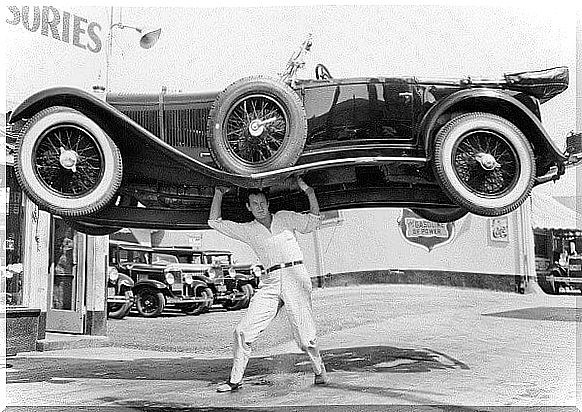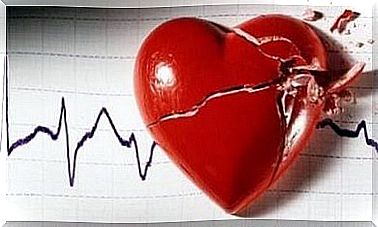What Is Adrenaline And What Does It Do?

We’ve all heard of adrenaline. But what exactly is adrenaline? Adrenaline makes us feel good when we exercise. It gives us butterflies in our stomach when we are attracted to someone and allows us to react to dangers in everyday life.
Although adrenaline improves our performance and activates our bodies, adrenaline also has a dark side. Excess harms. And also in the case of adrenaline, an excess causes serious side effects.
What is adrenaline? Adrenaline is a polyvalent substance, just like dopamine and oxytocin. It also acts as a neurotransmitter and affects our behavior more than almost any other hormone.
For example, adrenaline activates our survival instinct but also makes us susceptible to addictive behavior. It can trigger the kind of anxiety and chronic stress that many people suffer from.
Many professionals who work in crisis management teach their clients to properly manage their adrenaline. To do this, they ask them to do physically and emotionally stressful activities. These activities require them to learn to regulate their responses.
The goal is simple: train them so they don’t lose control and teach them what to do so that adrenaline is their friend, never their enemy.
Doing that and knowing exactly what this hormone can do for our bodies and behavior is truly amazing. So let’s learn more about adrenaline.

What is adrenaline and what does it do?
In 1982 Angela Cavallo of Lawrenceville, Georgia was named Mother of the Year. That’s what the media called her after she was featured in the news all over the world. She did something that would have been hard to believe had it not been witnessed by several people.
Her son Tony was working in the garage on his old Chevrolet when something terrible happened. The jack holding the car up suddenly broke. The car fell on the young man, causing him to get stuck underneath.
Angela Cavallo was 51 years old and weighed about 65 pounds. She didn’t go to the gym, she wasn’t a big woman and she had never lifted weights.
But when she saw her son’s feet under the car, she started screaming for help at the neighbors. When it became clear that no one would come, she did not hesitate.
She ran to the heavy car and lifted all 1,300 pounds without a second thought. She held the car up for a few seconds, long enough for her neighbors to run over to move her unconscious son.
This astonishing feat has two almost magical elements: a mother’s love and a whole lot of adrenaline. Enough adrenaline gives us the power to do incredible things just to survive and help others survive.
What is adrenaline: the activation hormone
Adrenaline belongs to the group of catecholamines, along with noradrenaline and dopamine. It is produced by the adrenal glands, just above the kidneys.
There is also a synthetic version of adrenaline called epinephrine. Epinephrine was made in a lab. It is chemically identical to adrenaline and therefore very useful in cardiopulmonary resuscitation medical emergencies.
To understand how adrenaline works, we can use the story of Angela Cavallo and her son:
- We perceive a threatening or dangerous situation (for example, a car falling on our child). Our hypothalamus, which is responsible for our emotional responses, activates the sympathetic nervous system to emit a specific response to that stimulus.
- The hypothalamus also communicates directly with the adrenal medulla, also called medulla glandulae suprarenalis . And this in turn is connected to the adrenal glands. These glands are willing to release a good amount of adrenaline to energize us and mediate how we behave and react.
Adrenaline uses concrete mechanisms for action
But there’s more. The body does not only produce adrenaline. It also activates a series of fine-tuned biological mechanisms. These mechanisms make it easier for us to respond:
- We become less aware of the situation. That is, our brains try to focus all our attention on just one thing. Everything else is pushed into the background.
- On the other hand, the brain chooses which senses will be most useful. In fact, it is very common for noise to be excluded. In other words, we hear less so we can see better.
- Our pupils dilate almost immediately to let in more light so we can see better.
- Adrenaline does something else that you may recognize. It widens our blood vessels and increases our heart rate. This happens for a reason: to pump more blood so that more oxygen goes to our muscles. Therefore, we have more power and are better able to respond.
Here’s an interesting tidbit. Our brains will instruct our immune system to release large amounts of dopamine and pain-relieving endorphins.
This means that we will not feel any pain if we are injured. Just like Mrs. Angela Cavallo, who felt no pain at all when she lifted a 1,300-pound car.

What is adrenaline : positive and negative sides
Adrenaline does a lot of good things. It can encourage us to overcome challenges. It can also be just as enjoyable as it is addictive.
Adrenaline helps us to adapt to any stressful situation. It helps us to practice risky sports. Thanks to adrenaline, we can do our best for an exam or enjoy a romantic date.
Shaking hands, a lump in the throat, dilated pupils when we look at the person we are attracted to… These are all direct effects of adrenaline.
Adrenaline makes us feel happy when we dance and have fun with other people. It also gives us that incredible feeling of being on a roller coaster or driving a fast car.
As you can see, many of these things carry a certain amount of risk. It is precisely at that moment, when we put our feet back on safe ground unharmed after the experience, that we feel the euphoria and immense satisfaction and liberation that adrenaline brings.
Because of this, there are people who are addicted to adrenaline. This is the dark side of adrenaline that we definitely need to know more about.

What is adrenaline: adrenaline addiction
Some people are attracted to the more dangerous side of extreme sports. Some are really playing with their lives. The cause of this kind of behavior (which many of us have probably seen) is sometimes more than a simple quest for fun and adventure.
The intense spike of adrenaline that these people experience can also fill a void or mask their emotions.
When we think of an addict, we immediately imagine someone who is dependent on certain drugs. Someone who uses this drug not so much for pleasure, but rather to eliminate discomfort.
Yet we don’t often talk about other forms of addiction. Constantly striving for an adrenaline rush or looking for risks to feel alive is also addiction.
On the other hand, as with other addictive substances, it is also common to need higher and higher doses to experience the same effect as before. Our body develops a tolerance over time. Forcing addicts to seek out even more risky and extreme behaviors and experiences to get the same sensation.
It is important to distinguish between an athlete who professionally and responsibly practices an extreme sport and one who does the same without thinking about the consequences of his actions.
In this sense, we can say that an addict doesn’t think, he just wants to satisfy a biological need.
What is adrenaline and chronic stress
By now we have seen that adrenaline can become addictive. Now there is another interesting negative aspect of adrenaline. And this is the daily development of chronic stress.
Chronic stress is the direct result of constant pressure and tension. If we don’t manage pressure and tension in time, they lead to chronic stress. This emotional state is caused by a build-up of two specific hormones in the blood: adrenaline and cortisol.

When we go through difficult, uncomfortable situations that threaten our physical and emotional balance, our brain interprets them as a danger. That’s when adrenaline kicks in and when we need to act efficiently.
But we don’t always, and that’s when adrenaline builds up and causes changes in our bodies (high blood pressure, fast heart rate, digestive problems).
Our health is being affected and we are putting our lives at risk. It’s not something that we can just push aside, nor can we put this problem off until tomorrow or next week…
What is adrenaline? In conclusion, we can say that adrenaline fulfills a ‘magic’ purpose as long as it is released at the right time. In those situations, it acts as a vital impulse to help us react, keep us safe, better adapt to certain situations.
But if we need this feeling every day or if we allow tension and fear to take over, adrenaline can have the worst effect: it can ruin our health.
Bibliography
Kandel (2001). Principios de la neurociencia Madrid, LTC.
Hart, A (1995). Adrenalin and Stress. Thomas Nelson editors.
Bennett M (1999). “One hundred years of adrenaline: the discovery of autoreceptors.” Thieme Publishing Group.









